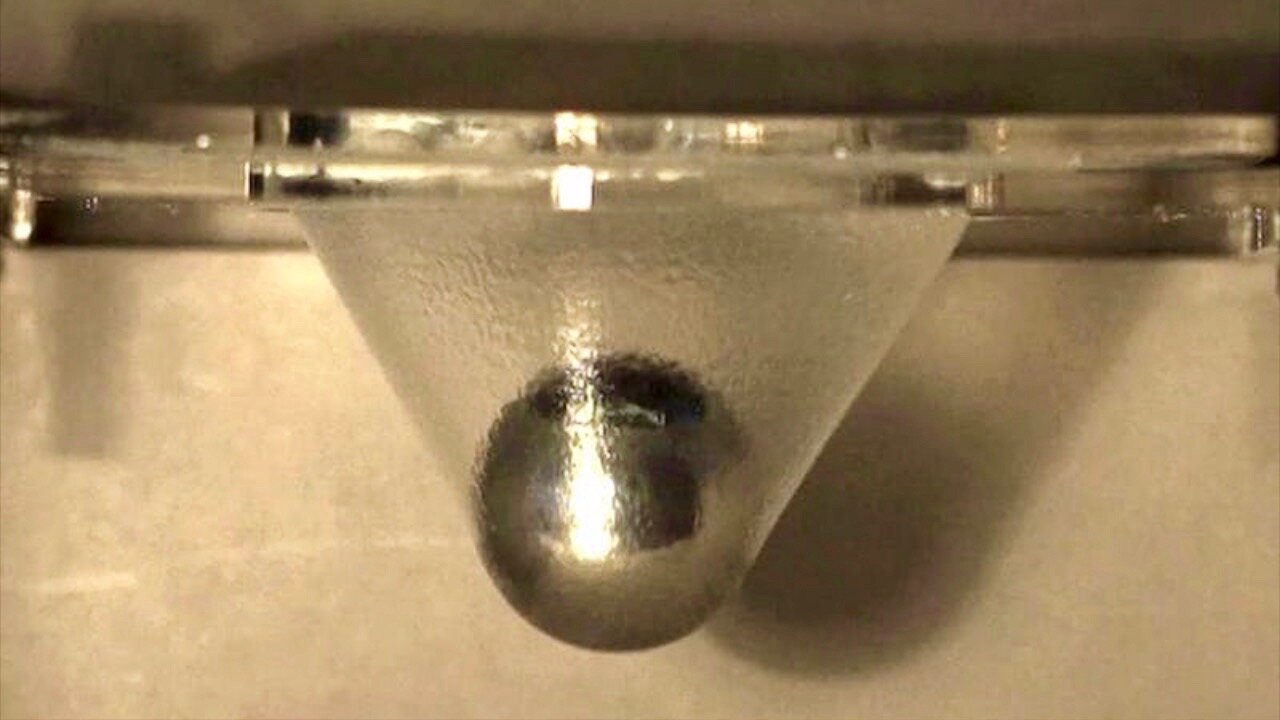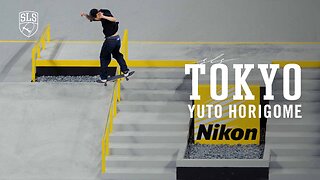Premium Only Content

World's Strongest Hydrogel Self Heals & Can Replace Cartilage
Tough gel stretches to 21 times its length, recoils, and heals itself. Biocompatible material is much tougher than cartilage Cambridge, Mass. — A team of experts in mechanics, materials science, and tissue engineering have created an extremely stretchy and tough gel that may pave the way to replacing damaged cartilage in human joints. Called a hydrogel, because its main ingredient is water, the new material is a hybrid of two weak gels that combine to create something much stronger. Not only can this new gel stretch to 21 times its original length, but it is also exceptionally tough, self-healing, and biocompatible — a valuable collection of attributes that opens up new opportunities in medicine and tissue engineering.
The researchers pinned both ends of the new gel in clamps and stretched it to 21 times its initial length before it broke.
The material, its properties, and a simple method of synthesis are described in the September 6 issue of Nature.
"Conventional hydrogels are very weak and brittle — imagine a spoon breaking through jelly," explains lead authorJeong-Yun Sun, a postdoctoral fellow at the Harvard School of Engineering and Applied Sciences (SEAS). "But because they are water-based and biocompatible, people would like to use them for some very challenging applications like artificial cartilage or spinal disks. For a gel to work in those settings, it has to be able to stretch and expand under compression and tension without breaking."
To create the tough new hydrogel, they combined two common polymers. The primary component is polyacrylamide, known for its use in soft contact lenses and as the electrophoresis gel that separates DNA fragments in biology labs; the second component is alginate, a seaweed extract that is frequently used to thicken food.
Separately, these gels are both quite weak — alginate, for instance, can stretch to only 1.2 times its length before it breaks. Combined in an 8:1 ratio, however, the two polymers form a complex network of crosslinked chains that reinforce one another. The chemical structure of this network allows the molecules to pull apart very slightly over a large area instead of allowing the gel to crack.
The alginate portion of the gel consists of polymer chains that form weak ionic bonds with one another, capturing calcium ions (added to the water) in the process. When the gel is stretched, some of these bonds between chains break — or "unzip," as the researchers put it–releasing the calcium. As a result, the gel expands slightly, but the polymer chains themselves remain intact. Meanwhile, the polyacrylamide chains form a grid-like structure that bonds covalently (very tightly) with the alginate chains.
By themselves, polyacrylamide gels (a) and alginate gels (b) are brittle. The new hydrogel (c), however, has a more complex molecular structure that helps to dissipate stress across a wide area. The red circles represent calcium ions, and the blue triangles and green squares represent covalent crosslinks between chains.
Therefore, if the gel acquires a tiny crack as it stretches, the polyacrylamide grid helps to spread the pulling force over a large area, tugging on the alginate’s ionic bonds and unzipping them here and there. The research team showed that even with a huge crack, a critically large hole, the hybrid gel can still stretch to 17 times its initial length.
Importantly, the new hydrogel is capable of maintaining its elasticity and toughness over multiple stretches. Provided the gel has sometime to relax between stretches, the ionic bonds between the alginate and the calcium can "re-zip," and the researchers have shown that this process can be accelerated by raising the ambient temperature.
The group’s combined expertise in mechanics, materials science, and bioengineering enabled the group to apply two concepts from mechanics — crack bridging and energy dissipation — to a new problem.
"The unusually high stretchability and toughness of this gel, along with recovery, are exciting," says Suo. "Now that we’ve demonstrated that this is possible, we can use it as a model system for studying the mechanics of hydrogels further, and explore various applications."
"It’s very promising," Suo adds.
Beyond artificial cartilage, the researchers suggest that the new hydrogel could be used in soft robotics, optics, artificial muscle, as a tough protective covering for wounds, or "any other place where we need hydrogels of high stretchability and high toughness."
Music: What Must Be (Deep Mix)
Amazon- https://amzn.to/3eAjEgC
https://music.apple.com/us/artist/dhruva-aliman/363563637
https://dhruvaaliman.bandcamp.com/album/what-must-be
http://www.dhruvaaliman.com/
Spotify - https://open.spotify.com/artist/5XiFCr9iBKE6Cupltgnlet
#medicine
#future
#joints
-
 49:16
49:16
Knowledge Land
18 days agoThe Prehistoric Volcano That Nearly Wiped Out All Humanity - Full Documentary
512 -
 1:48
1:48
AgentofSocialMediaChaos
3 years agoThe World's Strongest Rearguard Labyrinth Country's Novice Seeker Volume 1 Review
20 -
 LIVE
LIVE
Tate Speech by Andrew Tate
8 hours agoEMERGENCY MEETING EPISODE 99 - 2024 - TIME VACUUM
16,740 watching -
 26:14
26:14
Breaking Points
58 minutes agoSH*TSHOW: FBI Retracts False Info on NOLA Attacker
38 -
 56:35
56:35
The Dan Bongino Show
3 hours agoReprise: Best Episode Of 2024 - 01/02/2025
140K722 -
 16:04
16:04
Tundra Tactical
1 day ago $0.18 earnedHow Palmetto State Armory got so BIG!
5842 -
 25:19
25:19
Feeding the Byrds
55 minutes ago3 EASY DINNERS for a BUSY week! | Easy dinner inspiration
-
 6:44
6:44
SLS - Street League Skateboarding
7 days agoYuto Horigome’s 2nd Place Finish at SLS Tokyo 2024 | Best Tricks
3.1K1 -
 LIVE
LIVE
hambinooo
3 hours agoTarkov Thursday
672 watching -
 2:22:31
2:22:31
The Kirk Minihane Show
5 hours agoKMS LIVE | January 2, 2025 - ft. Blind Mike & Beer Stud
45.3K1